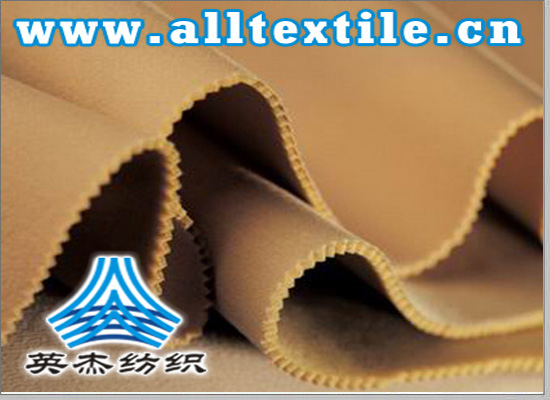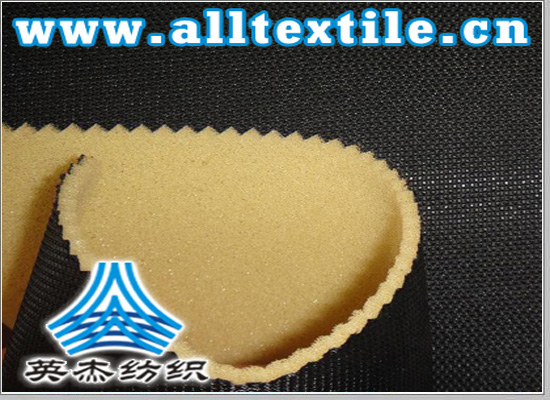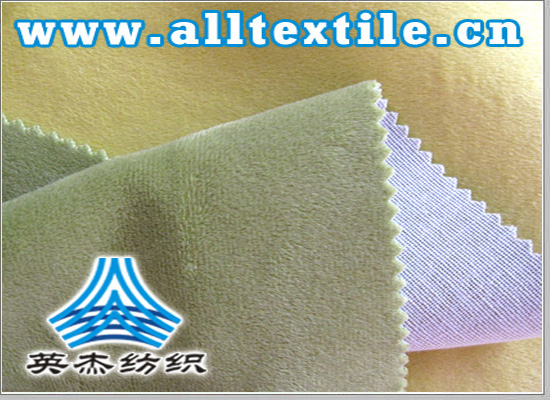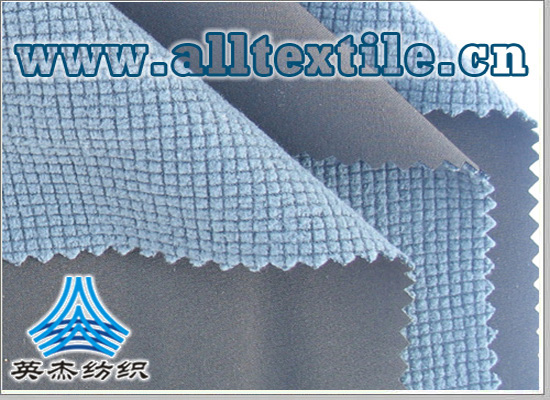Contents:
Fabric Market
Composite fabric:
A variety of knitted fabric, with polyester yarn sandwiched in the middle, and the other two sides can be T, T/ C, C can be the same or different on both sides. Some are called health cloth.
Example: Composite fabric will be popular next year, and we will make more models using composite fabric.
Light jump: (Lamp-up)
When comparing two color samples (standard sample and comparison sample), the same color under a certain light source and different colors under another light source Phenomenon.
Example: No, I’m burning the midnight oil.
Exposed bottom:
A phenomenon of inconsistent colors in blended fabrics.
Example: (stall) Sister, you see this piece of fabric is exposed, so you can’t use it.
Snagging:
Also called snagging; the yarn on the fabric is hooked by foreign objects to form a loop.
Example: (stall) Sister, you see this piece of fabric is snagging and can’t be used.
Gram weight:
Cloth weight per square meter.
Example: Boss, how much does this fabric weigh?
Door width/sealing:
Width of gray fabric, width;
Example sentence: Boss, how wide is the door width of this fabric?
Ant wrinkles:
It is the appearance of small protrusions or wrinkles on the cloth surface. There are also fabrics with this special effect.
Example A: There is something wrong with this batch of fabrics, there are so many ant wrinkles!
Example B: The ant wrinkles on this fabric are very suitable for this style.

Destination:
There is a small strain on the fabric.
Example: The boss sent this piece of fabric on purpose and needs to be replaced.
Yin-Yang color:
That is, slight color flowers.
Example: The boss’s piece of fabric has yin and yang colors and needs to be replaced.
Steaming:
When I was making boards in the past, I always heard the master call steaming steaming;
Example: Fabric must be steamed before cutting. Pre-shrink.
Dip: (Chinese name: Dipu)
In fact, in our case it means process duplication, that is to say, at every step of the cloth, the craftsman needs to confirm the process, and then Cloth can be processed.
For example: M-Dip is to confirm the mercerizing process; S-Dip is to confirm the shaping process; R-Dip is to confirm the raising process.
Kese:
That is, black, the Hong Kong style name, the pronunciation of black in Cantonese is close to (ha’en), it seems to have nothing to do with gram, it is probably the transliteration of black . Many things in Guangdong are transliterated, such as store, ball, etc.
Example: This fabric is of poor color.
Khaki:
Khaki, derived from the Persian word for dust or dust. As you can imagine, it is the color of dust. Earthy yellow is a color between light yellowish brown and medium light yellowish brown, so khaki is also a synonym for color.
Example: Khaki is popular this year.
Wang color, Zi:
It is yellow; Zi (purple) is conveniently called by some factories.
Example: Wang-colored fabric.
Homework:
Example: Let’s do our homework tomorrow.
Contrast colors:
When two different colors are put together to make clothes, you need to consider the problem of mutual staining of different colors on the clothes. Testing the color fastness of this mutual staining is called Contrast color fastness.
Example: The risk of contrasting colors is a bit high.
Clothing Market Chapter
Sharing source: @平平无奇 Mr. Krabs
Stealing version:
It is to buy other people’s sample clothes Come back and sell your own imitations.
Example: That restaurant downstairs is stealing our version!
Best version:
Many merchants are selling the same style, and the cumulative sales volume of a single style is high.
Example: This is the big bang version of my house!
Running version:
Refers to a self-developed sample that is sold in advance by others.
Example: It’s broken, our running version is broken!
Ready stock:
Ready-made, in-stock clothing styles, meaning they can be shipped at any time.
Example: I have this product in stock and can ship it today.
Purchase goods:
Purchase ready-made clothing.
Example: We don’t have enough clothes to sell. I’m going to pack some goods and come back.
Specialized goods:
We do not produce our own goods, but buy other people’s goods and sell them back. This is similar to the second batch, but smaller in scale than the second batch.
Example: Big brother, I am a speculator and do some small business.
Shahe goods:
Refers to the goods in the wholesale market in Shahe area of Guangzhou that are of poor quality and relatively low price. It means the minimum order quantity is high.
Example: My factory only makes Shahe products, but we can’t make high-quality products!
Thirteen licensed goods:
Refers to Guangzhou’s mid-range quality products for the New China market.
Example: My factory makes thirteen lines, not Shahe’s. It’s too cheap to make.
Foreign trade goods:
Explanation 1: Goods exported to foreign countries have poor quality, low prices and large quantities.
Example: We are engaged in foreign trade, and we ship tens of thousands of items a day.
Explanation 2: In the northern region, it also refers to the tail goods of foreign brands.
Example: I want to find some foreign trade goods in Beijing.
A goods:
Imitation of big brands, fakes, replicas.
Example: My pair of barbs are A, so I don’t feel any pressure when I enter the counter!
European products:
Imitate the styles of big brands and put your own logo on them.
Example: Our XXX brands are all patterned according to GUCCI 1:1, and the fabrics are the same.

First-hand goods:
Refers to the minimum order quantity of goods in clothing wholesale.Accurate, usually the number of yards per lot, or the minimum order quantity of 5 or 10 pieces.
Example: Boss, how many hands do you want to take?
Original order:
Good quality A product is the more expensive A product.
Example: This is the original order, the authentic last order.
Order arrangement:
Only sample clothes, no ready-made clothes, we are in production and need to wait. This means you have to wait a few days for delivery.
Example: My order is being placed for this product, so I have to wait for two days.
Last order:
Slow-selling or out-of-season and slightly defective clothing. It means cheaper.
Example: If anyone has a cheap last order, I’ll take it.
Foreign orders:
Refers to foreign trade orders and exported clothing products.
Example: We are doing external orders, but we do not do domestic sales.
Pending orders:
Refers to clothing orders for which payment or deposit has not been paid.
Example: Dear, let me hang up the order for you first, and you can pay as soon as possible!
Flying orders:
The order was not dispatched as agreed, and the order originally promised to A was given to B due to certain factors.
Example: Company XXX has made a purchase, we have blacklisted him and we will not cooperate with him in the future!
Packaging:
Clothing wholesale generally requires a minimum order quantity. Packaging means that you need to purchase according to the minimum order quantity, usually 5 or 10 pieces, or all colors and sizes. retail.
Example: Boss, do you want to package it or buy it individually?
One batch:
Source wholesaler, the products are developed and produced by themselves.
Example: My family makes a batch, and the price is the lowest!
Second batch:
Purchase goods from suppliers and then sell them. It means the selling price is relatively high.
Example: This company is making a second batch, I know who he purchased it from!
Online wholesale:
Those who do online wholesale generally refer to merchants who make cheap products. Make money by making small profits but quick turnover. It means high minimum order quantity and poor quality.
Example: This company does online batching,
Mixed batching:
Clothing wholesale generally requires a minimum order quantity, which means that multiple styles can be used to make enough. Just the minimum order quantity. There is no need to meet the minimum order quantity for a single item.
Example: We can have mixed batches, and you can get whatever style you like.
Where was it made? :
A kind of probing, asking for your basic information. If you don’t answer well, you may be treated as a passerby.
Example: Boss, where did you do it? Answer: Northeast, they make high-quality products.
Dolls & Contractors:
One profession is moving goods. If you can’t move them, you can find them in the wholesale market to help move goods or deliver goods.
Example: Boss, will you deliver the goods to you, or will you pick up the dolls for you?
Original:
It is a niche type of clothing with its own development style. It generally also means that the product is more expensive.
Example: We are making original products that cannot be bought outside!

Thirteen lines:
The name of Guangzhou area, Thirteen lines refers to Thirteen lines of road All wholesale markets do not refer to a specific building, but insiders generally refer to the New China Building. It depends on the context.
Example: I make men’s clothing in Shisanhang.
New China:
The most representative wholesale building within the scope of the Thirteen Banks, it is at the core of the country.
Example: I am on the 4th floor of New China. Which floor are you on?
Shahe:
The name of the Guangzhou area, generally referred to as Guide City and Wanjia, as well as clothing wholesale cities such as Jinma, where you can find leggings for 10 yuan a piece and 30 yuan a piece. A cotton shirt.
Example: I am at Wanjiajia Street, where are you?
Sijiqing:
The name of the Hangzhou area refers to the gathering place of Yifa, Zhongzhou, Sijiqing, Kunlong, Changqing, Jiutian and other wholesale markets.
Example: I will leave for Hangzhou tomorrow, my ticket is booked, and my first stop will be Sijiqing.
Italian Law:
Hangzhou Women’s Clothing Center Base, the New China Building in Hangzhou.
Example: I am watching the market in Nanyou.
Clothing Factory Chapter
Part of the content source: @平平无奇 Mr. Crab
Place orders:
Explanation 1: Refer to processing The factory distributes clothing orders.
Example: I went to the factory to make orders, and he wanted to treat me to dinner in the evening.
Explanation 2: Refers to a profession that makes profits by earning the price difference on outbound orders.
Example: I am a trader, and I usually charge a 10% management fee.
Following & QC:
A profession that is generally responsible for the production and acceptance of clothing orders.
Example: Hello, I am the QC of XXX company. I am responsible for the follow-up of this batch of orders.
361:
Payment method: 30% deposit, 60% shipment payment, 10% quality deposit. This means that the last 10% you pay when encountering a black-hearted enterprise is the tuition fee you pay.
Example: My family pays 361.
FOB:
In the apparel industry, it refers to the finished product procurement model. The production supplier directly quotes the cost purchase price including all costs before arrival at the warehouse. This means that the supplier bears most of the funds and risks for making goods, which also means greater profit margins.
Example: We operate in FOB mode.
ODM:
As far as the apparel industry is concerned, it means that suppliers develop products and sellers purchase them directly. For example, for the products I develop, if you choose to order directly and entrust me to produce them, it is ODM.
Example: Our company has designers and factories and can do ODM mode.
OEM:
As far as the clothing industry is concerned, I only have a factory and no R&D capabilities. After you design the drawings, I will help you turn them into physical objects and produce them for you, which is OEM.
Example: Our factory can cooperate with designers to do OEM.

I help you turn it into a physical object and produce it for you, which is OEM.
Example: Our factory can cooperate with designers to do OEM.







